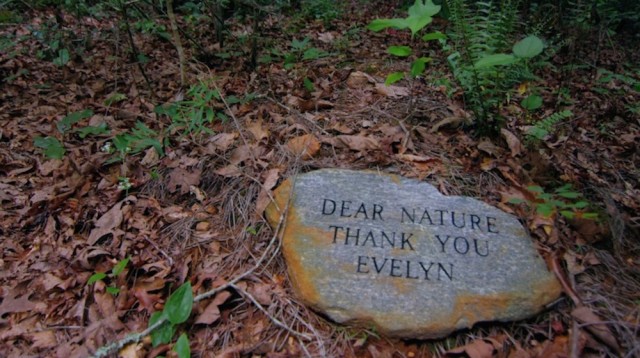
Written by Green Dude Brian Wilson
As so many of us across the globe focus more on the environmental impact our lives make, the role of one very common activity continues to be largely overlooked: our funeral practices.
LISTEN:
Listen in as I talk with Green Diva Meg about the green burial movement as well as A Will for the Woods in this Green Diva Radio Show episode!
The typical funeral
The typical American-style funeral, which has become common in many parts of the world— with a casket of freshly-hewn or -mined wood or metal, a concrete vault, a marble or granite monument, and embalming—is incredibly resource-intensive.
The Green Burial Council, an environmental certification organization, has estimated that in the U.S. alone, approximately 33 million board feet of mostly virgin wood, 60,000 tons of steel, 1.6 million tons of reinforced concrete, and five million gallons of toxic embalming fluid are put into the ground each year. The frequent mowing, watering, and application of lawn chemicals at most cemeteries contribute significantly to the substantial environmental footprint of conventional burial.
Cremation, though less resource-intensive than conventional burial, is nonetheless an industrial process that uses fossil fuels and creates pollution. As the body is burned at high temperatures (around 1600ºF for over two hours), particulate pollution, CO2 (approximately 110 pounds per average cremation), dioxins, furans, and mercury are released into the atmosphere, in varying amounts depending in part on the presence and effectiveness of filtration systems.
How did we get to the point where something so timeless and ubiquitous as dealing with our dead has become so problematic?
Simple natural burials were prevalent for thousands of years — and still are in many parts of the world, including in traditional Muslim and Jewish burials — before the contemporary funeral industry propagated a new standard of expensive and elaborate funerals divorced from natural processes.

Green burial movement
The burgeoning green burial movement seeks to change modern funeral conventions, reducing the resource use and pollution associated with funerals and, in many cases, using burial as a tool for conserving or restoring the land where burials occur.
In a green burial, the deceased is laid to rest in the earth along with only biodegradable materials, usually in a wooded or other natural setting, without a vault or embalming, and often with a fieldstone or indigenous plant marking the grave. In terms of cost, green burial is usually markedly less expensive than conventional burial, and sometimes even comparable with cremation (though cremation does tend to be cheaper).
In regard to the psychological and spiritual aspects, many people find solace in the idea of their bodily material living on, in a sense, in the ecosystem of a preserve — and eventually beyond it. I’ve also seen and often heard it observed that the rituals provided by a green burial tend to engage friends and families of the deceased more fully than those of conventional burial.
A Will for the Woods Trailer
Click on Page 2 to read more about the film…